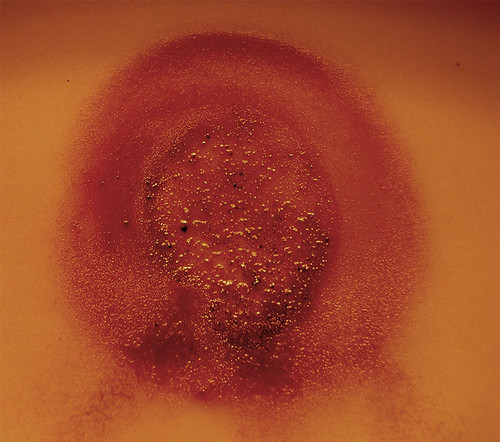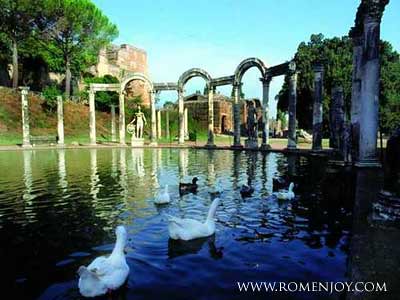

It wasn't until I moved to the US that I started drinking coffee regularly and became what they call in the Netherlands a 'koffieleut', which translates literally into 'coffee socialite.' Although the average European drinks more coffee per year than the average American, the cultural importance and its effects on the average European seems to me smaller than that on the average American. After all, coffee is a cultural obsession in the United States.
Chains with thousands of branches like Dunkin' Donuts or Starbucks dominate US daily street life. Especially in the morning (90% of coffee consumed in the US is in the morning), millions of white foamy cups with boldly imprinted pink and orange logos bob across the streets in morning rush hour and on the train. Coffee drive-ins are a saving grace for the rushing army of helmeted and tattooed construction workers. During lunch break, men and women in savvy business suits duck into coffee shops.
Students chill out from early afternoon till late evening on comfy couches at coffee lounges around campus. Police officers clutch coffee cups while guarding road construction sites on the highway. In short, coffee drinkers in the United States can be found just about anywhere you go.
This mass-psychotic ritual causes Americans to associate Europe above all with cars that oddly do not contain cup holders (to an American this is like selling a car without tires), or with the unbelievably petite cups of coffee European restaurants serve, so small that my father-in-law had to always order two cups of coffee. It is my strongest conviction that the easily agitated and obsessed nature of the 'New Englander' can be blamed on the monster-size cups of coffee they consume. Not without reason is the word 'coffee' derived from the Arab 'qahwa' meaning 'that which prevents sleep.' Arabs have cooked coffee beans in boiling water since as far back as the 9th century and drank the stimulating extract as an alternative to the Muslims' forbidden alcohol.
These days coffee is second only to oil as the most valuable (legally) traded good in the world with a total trade value of billion. Interestingly, only $
6 billion reaches coffee producing countries. The remaining billion is generated as surplus value in the consumption countries. Small farmers
grow 70% of world coffee production. They mainly
grow two kinds of coffee beans: Arabica and Robusta. About 20 million people in the world are dire
ctly dependent on coffee production for their subsistence.
Table 1: production in 2002/3
country % 70% Arabica
30% Robusta
Brasil 42.03% Arab/Rob
Colombia 8.88% Arabica
Vietnam 8.35% Robusta
Indonesia 4.89% Rob/Arab
India 3.74% Arab/Rob
Mexico 3.54% Arabica
Guatemala 3.1% Arab/Rob
Uganda 2.53% Rob/Arab
Ethiopia 2.44% Arabica
Peru 2.24% Arabica
Table 2: consumption in 2001/2world consumption % kg per capita (2001)
USA 30.82% Finland 11.01
Germany 15.07% Sweden 8.55
Japan 11.47% Denmark 9.71
France 8.89% Norway 9.46
Italy 8.59% Austria 7.79
Spain 4.90% Germany 6.90
Great-Brittain 3.63% Switzerland 6.80
the Netherlands 2.69% the Netherlands 6.48
Although the consumption of coffee per capita in the world is decreasing (in the US alone it decreased from 0.711 liter in 1960 to 0.237 liter presently), world consumption is still increasing due to the population explosion. Considering that coffee consists of either 1% (Arabica), 2% (Robusta) or 4.5%-5.1% (instant coffee) caffeine, the average American consumes at least 200 to 300mg (the recommended maximum daily amount) of caffeine a day through the consumption of coffee alone.
The place I frequent to down a cup of coffee is the Starbucks in Stamford, Connecticut. The entrance can be found on the corner of Broad Street and Summer Street, to the left to the main public library with its plain pediment and slim Ionic columns. The location right next to the library harmonizes with Starbuck's marketing plan. At the entrance of the coffee shop a life-size glass window curves around to the left, providing superb voyeuristic views of pedestrians on the sidewalk. As you enter, you step directly into the living room area with stacked bookshelves against the back wall. Velvet armchairs face each other with small coffee tables in the middle, creating intimate seating areas. The velvet chairs near the window are the prime seats, which people unfortunate to score a wooden chair prey upon. At the back of the long rectangular room is the coffee bar and a small Starbuck's gift shop. There is a dark wooden table with electrical outlets suited for spreading out laptops and spreadsheets, dividing the living room area from the coffee bar.
Since I have been cranky for weeks I hesitate to order a regular black coffee. It is very easy to get cloyed with a favorite food or drink in the US because of the super-sized portions served. The smallest cup of coffee is a size 'tall' (12oz.=0.35l.), after which one can choose between a 'grande' (16oz.=0.5l.) and a 'venti' (20oz.=0.6l.). Half a liter of coffee seems a bit over the top, and it sounds absolutely absurd to my European mind. I finally end up choosing a 'solo' espresso.
Sitting in one of the booth-like seats against the back wall, unable to obtain a prime seat, I feign to read my book while eavesdropping on conversations around to me. Three middle-aged men sit in three ash gray velvet chairs and converse loudly. A vivid dialogue develops, exchanged with half roaring, half shrieking, laughter. They mock a colleague in his absence and then clench their brows in concern while discussing the teeth of one of the men's daughter. Two African-American women sit at a small table opposite the reading-table in the murky light, one of them with a yellow headscarf with black African motifs. Close to the entrance, in the seating area next to the animated conversation, a vagabond is playing solitaire. One by one he places the creased cards with rounded backs over one another, as if he attempts to stick them together. He rendered a couple of dollars in exchange for a small coffee to feel, in the warmth of the front room, nostalgia for a cozy living room and relives a sense of intimacy of having your own house.
It's a bright, sunny, early autumn day, a typical New England Indian summer. Sunbeams radiate through the coloring, flickering foliage, and throw a puzzle-shaped shadow into Starbuck's window. Autumn's hand turns her colorful kaleidoscopic lens. The green ash tree near the sidewalk resembles, with its polychrome colors, somewhat a bronze statue: its stem sulphur bronze, its foliage intermittently copper green and ferric-nitrate golden. On the other side of the cross walk the top of a young red oak turns fiery red. These are the budding impressions of the autumn foliage for which Connecticut is 'world famous' in the US.
In the world of marketing and entrepreneurship, Starbucks is a success story. It is one of those stories of 'excellence' taught as a case study at business school. Founded in 1971, it really began its incredible growth under Howard Schultz in 1985, and presently has 6,294 coffee shops. But what does its success really consists of? A large cup of coffee at Starbucks is much more expensive than at Dunkin' Donuts: .69 compared to .40 for a Starbucks' 'venti'. But while Dunkin' Donuts offers only a limited assortment of flavors like mocha, hazelnut, vanilla, caramel and cinnamon, you will find exotic quality beans at Starbucks like Bella Vista F.W. Tres Rios Costa Rica, Brazil Ipanema Bourbon Mellow, Colombia Nariño Supremo, Organic Shade Grown Mexico, Panama La Florentina, Arabian Mocha Java, Caffè Verona, Guatemala Antigua Elegant, New Guinea Peaberry, Zimbabwe, Aged Sumatra, Special Reserve Estate 2003 - Sumatra Lintong Lake Tawar, Italian Roast, Kenya, Ethiopia Harrar, Ethiopia Sidamo, Ethiopia Yergacheffe and French Roast. So Starbucks offers luxury coffees and high quality coffee dining, reminiscent almost of the chic coffee houses I visited in Vienna.
Every now and then, I grin shamefully and think back at my endless hesitation choosing between the only two types of coffee available in most Dutch stores: red brand and gold brand. Even up to this day I have no clue what the actual difference is between the two, apart from the color of the wrapping: red or gold. Not surprisingly, Starbucks appeals to the laptop genre of people: consultants, students, intellectuals, the middle class, and a Starbucks coffee is a white-collar coffee, while a Dunkin' Donuts coffee is a blue-collar coffee. In Dunkin' Donuts you will run into Joe the Plumber, Bob the barber, and Mac the truck driver. But what is it exactly, that attracts the white collared workers in the US to fall back into the purple velvet chairs?
I imagine their working days filled with repetitive actions and decisions within a playing field of precisely defined responsibilities. How many of the players in these fields get through the day with its routines for simply no other reason than being able to enjoy their daily 30 minutes-escape into the Starbucks intimacy where, for a brief moment in the day, you regain the illusion of human warmth and exotic associations of resisting the coldness of high finance?
For 15 minutes you fall back into the deep, soft pillow of a velvet chair and randomly, and alas how important is that moment of utter randomness, pull a book from the shelves. While, in the background, soothing tones resound of country blues, with its recognition of deep human suffering, a blaze of folk with the primary connection with nature and tradition, or of merengue reviving the passionate memories of adventure and love, you gaze out the window and ponder about that simple, volatile reflection in the moment, strengthened by the physical effect of half a liter of watery coffee that starts to kick in and the satisfaction of chewing your muffin, bagel, cake, brownie, croissant or donut.
It is, above all, that bodily ecstasy caused by a combination of caffeine, sugar and the salivating Pavlov effect. You remember the struggling musician behind the counter taking your order, the amateur poet as you pay her for the coffee and give a full dollar tip, feeling a transcendental bound in your flight from reality. You stare with a fastened throbbing of the first gulps of coffee at the advertisements and poems on the bulletin board, and dauntlessly you think: They are right, they are so right! and what do I care? Why should I care?
But then you look at your watch and notice you really have to run again. 'Well, too bad, gotta go!', or people will start gossiping for being so long away from your desk. And while you open the door, an autumn breeze blows in your face, the last tunes of the blues solo die out as the Hammond organ whispers: 'I throw my troubles out the door, I don't need them anymore'.
Coffee in the US is a subculture that massively floated to the surface of the consumer's society. Starbucks is more than coffee, it's more than just another brand on the market, it is a social-political statement, a way of perceiving how you would like to live, in other words it is a culture. Starbucks is the alternative to Coca-Cola and so much more than just coffee: it's chocolate, ice-cream, frappuccino, travel mugs with exotic prints, cups and live music, CD's, discounts on exhibitions and even support for volunteer work.
The Coffee Culture in the USA

 Italian Coffee
Italian Coffee
The Coffee Culture in the USA
The Coffee Culture in the USA
The Coffee Culture in the USA

Italian Coffee














